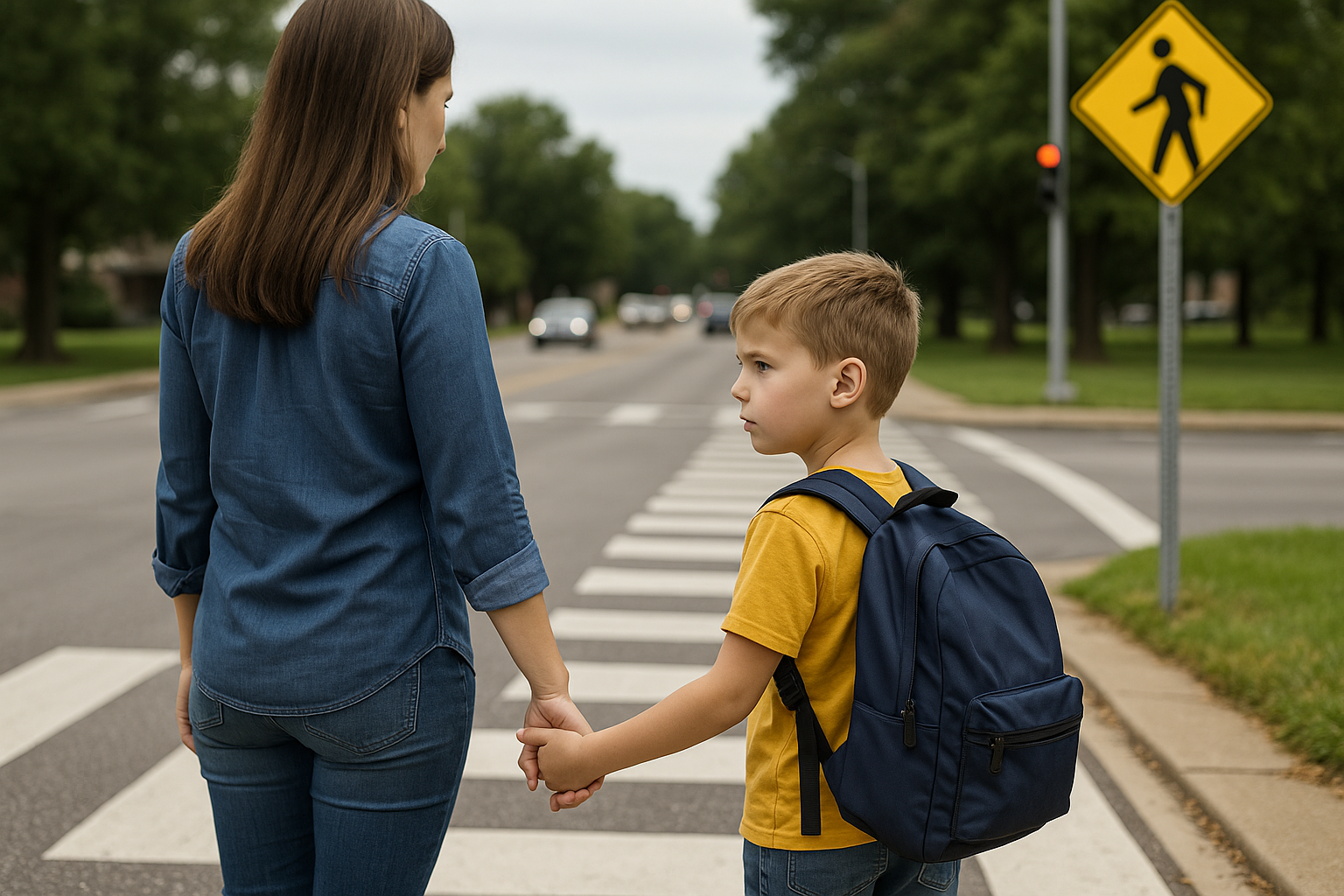
Why Community Safety Matters
Community safety is an essential life skill. For children on the autism spectrum, learning to navigate public spaces—whether crossing a street, walking through a parking lot, or interacting with community helpers—creates both independence and peace of mind for families.
Parents in Creve Coeur often worry about situations such as:
- A child running ahead in a parking lot
- Difficulty responding to “stop” or “wait” commands
- Challenges with understanding traffic signals or crosswalks
- Anxiety during fire drills or emergency situations
- Uncertainty about how to ask for help if lost
Applied Behavior Analysis (ABA) provides structured, supportive ways to teach safety step by step, making outings more enjoyable and less stressful for families.
How ABA Teaches Safety Skills
1. Task Analysis for Safety Routines
ABA breaks complex safety routines into smaller, teachable steps. For example, crossing the street may be taught as:
- Stop at the curb
- Look left
- Look right
- Hold caregiver’s hand
- Walk together when safe
2. Visual Supports
Pictures, icons, or portable cards remind children of safety rules. For example, a red stop sign card can signal “pause before moving.”
3. Role-Playing Scenarios
Therapists rehearse community safety situations in structured settings before practicing in real life. Role-play helps children feel confident responding appropriately.
4. Prompting and Fading
At first, children may need physical guidance to stop at a curb or hold a caregiver’s hand. Over time, prompts fade so independence grows naturally.
5. Reinforcement for Safe Behavior
Every success—like waiting at a crosswalk or asking for help—is celebrated. Reinforcement motivates children to continue practicing safety skills.
Real-Life Example: Parking Lot Safety in Creve Coeur
Sophia, a 7-year-old from Creve Coeur, often ran ahead in parking lots, leaving her parents anxious.
Her ABA therapist introduced a visual stop sign card and practiced holding hands before walking into parking lots. At first, Sophia needed reminders, but with consistent reinforcement, she began stopping independently and waiting for her parents.
Within weeks, Sophia proudly followed safety routines, and her parents said, “Trips to the grocery store are finally less stressful.”
Key Safety Skills ABA Can Support
- Street Crossing: Looking both ways, waiting for signals
- Parking Lots: Staying close, holding hands, waiting at the car
- Fire and Emergency Drills: Practicing calm exits and following directions
- Interacting with Community Helpers: Learning how to approach police officers, firefighters, or store employees if lost
- Stranger Safety: Understanding when to ask for help and who to approach safely
Parent Tips for Building Safety at Home
1. Practice in Safe Environments
Start in quiet parking lots or quiet neighborhoods before busier areas.
2. Use Consistent Cues
Always use the same words—like “stop” or “wait”—so your child understands clearly.
3. Reinforce Immediately
Celebrate successes with praise or small rewards right after safe behavior occurs.
4. Model Safety Behavior
Children learn by watching. Show them how you look both ways or hold hands at crosswalks.
5. Keep Practice Positive
Frame safety as empowering rather than scary, keeping practice sessions calm and encouraging.
Community Opportunities in Creve Coeur to Practice Safety Skills
Families in Creve Coeur have many local opportunities to integrate ABA safety strategies into real-life practice:
- Creve Coeur City Parks: Walking trails provide opportunities to practice staying close and crossing paths safely.
- West Oak Mall and Shopping Centers: Parking lots are ideal for practicing hand-holding and waiting.
- Local libraries: Children can practice following quiet rules, waiting in lines, and asking staff for help if needed.
- Creve Coeur Police Department’s community events: Safe opportunities to meet community helpers and practice communication.
- Neighborhood sidewalks: Everyday opportunities to practice street-crossing safety.
Why Safety Skills Support Lifelong Independence
Learning safety isn’t just about today—it lays the foundation for independence in adulthood.
- At school: Children handle fire drills and hallway routines more calmly.
- At home: Families enjoy less stress during errands and outings.
- In the community: Children confidently navigate parks, malls, and public spaces.
- As adults: Safety skills prepare for driving, public transportation, and independent living.
Long-Term Benefits for Families
Families often describe safety training as life-changing. Outings once filled with stress become more enjoyable. Parents feel more confident, and children gain pride in their growing independence.
In Creve Coeur, ABA strategies provide families with both peace of mind and a sense of empowerment, knowing their children are developing skills that will serve them for a lifetime.
FAQ
Q1: Can ABA really help with community safety?
Yes. ABA teaches safety step by step, reinforcing behaviors until they become habits.
Q2: What if my child refuses to hold hands?
Therapists introduce gradual reinforcement and alternatives, like staying close or holding onto a shopping cart.
Q3: How do I know when my child is ready for independence in the community?
Therapists assess progress and guide parents on safe levels of independence.
Q4: Can nonverbal children learn safety rules?
Yes. Visuals, gestures, and alternative communication devices are highly effective.
Q5: How often should we practice safety skills?
Consistency is key—practice daily in small, real-world moments.
